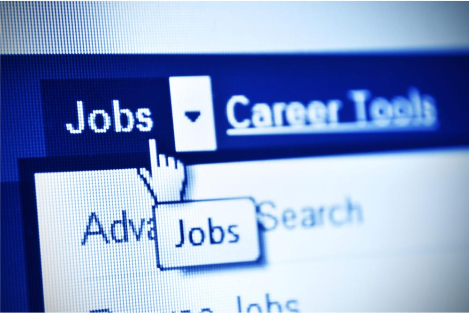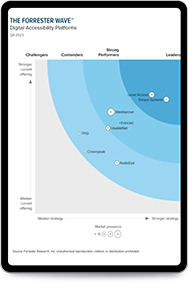Is your business’s online job search process accessible for people with disabilities?
Oct 28, 2021
By Charles Catherine, Director of Corporate & Government Relations for the National Organization on Disability.

If you look around your neighborhood these days, chances are you will see a lot of “help wanted” signs dotting the business landscape.
As we repeatedly hear, a labor shortage is gripping our nation and employers are struggling to find people wanting a job.
But below the surface is another story. People with disabilities say they want to apply for job openings but often can’t get past the application or interview process. Many online applications are not accessible to screen readers, for instance, and captioning isn’t always available during online job interviews. This leaves many people with disabilities discouraged and unable to even take the first step toward employment.
Is your application process accessible?
In some ways it’s a real paradox. More and more companies are committed to providing accommodations for their employees with disabilities, making sure they have the technology necessary to work remotely, for example, yet the application process may be riddled with online barriers, preventing these individuals from even applying in the first place.
At the National Organization on Disability, we understand it is not always easy for companies to know everything involved with recruiting and hiring people with disabilities. Adding to the complexity, many people are not likely to disclose a disability during the application process, for fear of discrimination. And they have good reason to feel that way: a Rutgers University study found that employers expressed interest in candidates 26 percent less often if they disclosed a disability in their cover letter.
NOD, whose mission is to make sure all Americans can work, would love it if the current underemployment situation became a boon for people with disabilities. However, only 36 percent of people with disabilities who can work have found jobs in the current economy. This is compared to an average of about 76 percent for their able-bodied peers, according to a recent report.
But we can turn this statistic around. As the saying goes, we don’t know what we don’t know. Companies may need outside help to open up their online employment process to everyone. They also might consider reevaluating their disability inclusion programs.
Track your website’s accessibility
NOD’s Disability Employment Tracker allows companies to see where they stand against their own disability benchmarks and against those of other companies. We have found that 72 percent of those who have completed the Tracker have a website that is accessible. That is a good beginning but leaves room for improvement when it comes to other digital assets like recruiting sites and accommodations during the interview process.
Here are some ideas for businesses as they consider their online hiring practices:
- Assign a disability champion who makes sure digital accessibility is a priority
- Closely examine (and test) all of your digital properties to make sure they are accessible
- Provide disability inclusion training for the HR team and others
- Think about whether your presentations, videos, website, online job application, and interview process are all accessible
- Designate a point person for prospective employees if they have questions or difficulties applying or interviewing for a job
- Be certain your onboarding materials are accessible once someone is hired
You should also ask yourself a few questions:
- Is our website compatible with screen readers?
- Do we have an accessible landing page specifically for job seekers with disabilities?
- Do we use plain language in all of our job postings and messaging?
- Are we including captioning on videos and during online interviews?
- Do we have access to sign language interpreters?
- Do we have proper accommodations for online interviews with neurodiverse candidates?
By making sure the online application and interview processes are inclusive to people with disabilities, companies will tap into a greater pipeline of talented job candidates, and by doing so, change the culture of their workforce for the better. And while this is a great conversation to have as we close out National Disability Employment Awareness Month, it’s the NOD’s hope that finding ways to help people of all abilities easily apply for a job becomes an ongoing discussion.
eSSENTIAL Accessibility works with companies to make all their digital assets accessible for individuals with disabilities. To better understand your state of accessibility, schedule a consultation today.
Subscribe for updates

